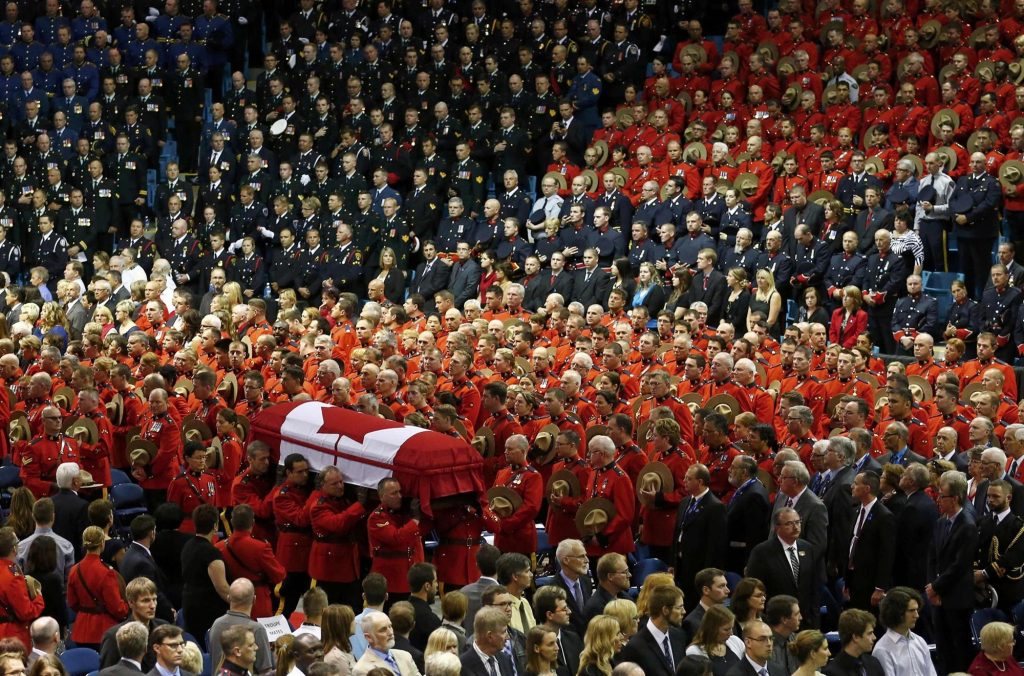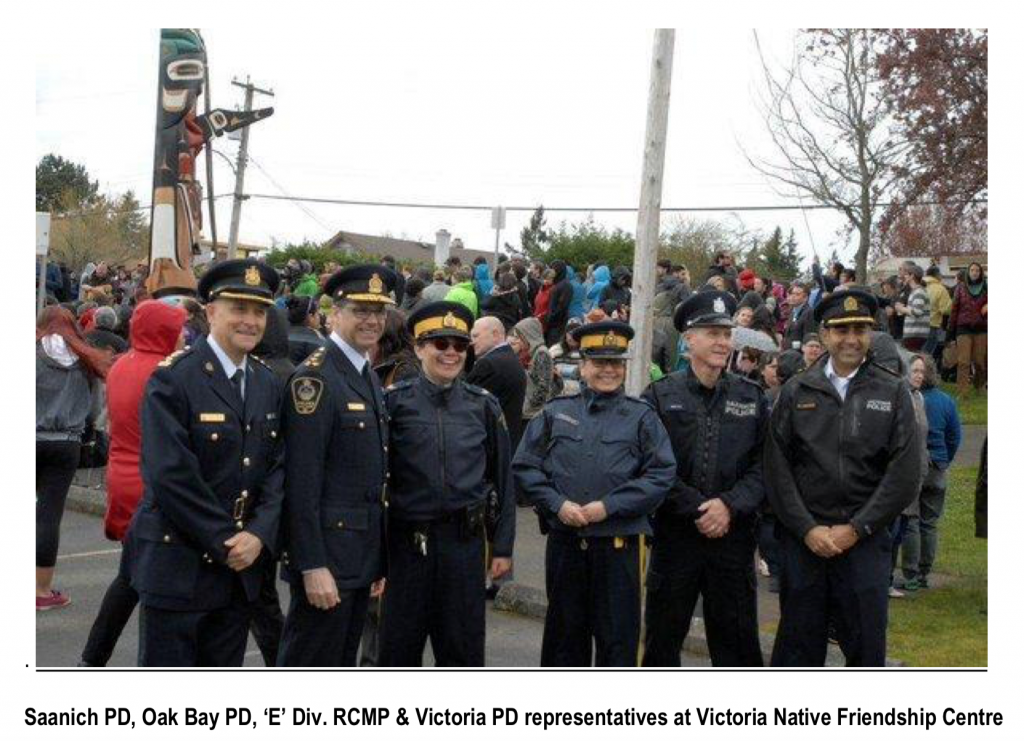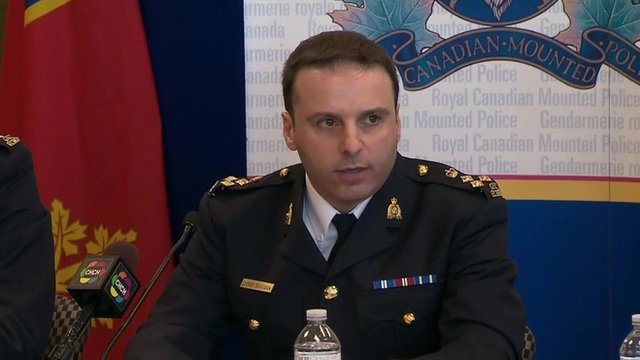Introduction: Thank you Chief Constable Del Manak

Thank-you Chief Del Manak.
Along with your administrative staff and members, you have now taken ownership of challenges faced by VicPD and our Capital City. Don’t ever underestimate how important the step you have taken is in bringing about real change. It’s been over two decades since a Victoria Chief Constable pushed back against powerful backroom forces touting amalgamation as the only solution.
December 23, 2021. Victoria police officers report work culture, mental health challenges as top concerns
The release of this report on the internal challenges facing the VicPD tend to mirror much of what is written in this series. The challenges facing the VicPD didn’t just begin in recent times, the challenges have been building for decades. However, this is the first time VicPD has engaged outsiders to take a look at the effect their management systems is having on the overall operation of the department. This is certainly a step forward, however it will require far more work using assisting professionals to create real change within the department. The following introduction was written at a time when it appeared the Chief was trying to take a significant step in the right direction. However, the last two years does not many signals that suggest much has changed.
Introduction.
This post serves to introduce both Chief Manak’s Transformation Report, as well as the broader discussion of policing in the CRD as presented in a recent four-part series Changing the way police do business.
While the Chief must cross many hurdles, he has taken the first step by asking his members and the citizens of Victoria to look inwards by defining what must be done if the force is to meet the challenges of the 21st century.
An initial move was made in the late 1980s and 90s, when another force insider, Chief Constable Douglas Richardson, and his immediate predecessor, worked to correct some long-standing deficiencies. Moving to the new police station on Caledonia was one giant step forward. However, following Richardson’s retirement in 1999, progress stalled for one simple reason – the voices of amalgamation took over City Hall and the Police Department.
Part I. Changing the way police do business
Part II, Comparing differing police cultures
Part III, The past as a guide to the future
Part IV The integration of police services
Amalgamation or Bust. Continue link below
(489)
Changing the way police do business (Part I)
I don’t think anything demonstrates the solidarity of police officers more than when attending the funeral of a comrade killed in the line of duty. This photo, taken in Moncton in 2014, captures the essence as officers from across Canada and around the world bid farewell to Constables Fabrice Georges Gevaudan, 45, David Joseph Ross, 32, and Douglas James Larche, 40, killed during a shooting spree.
The shields of Central Saanich, Oak Bay, RCMP, Saanich, and Victoria represent the ideals of comrades in arms.
Part II, Comparing differing police cultures
Part III, The past as a guide to the future
Part IV The integration of police services
Link to CBC Podcast: Policing in the CRD
Contact: Harold@mcneillifestories.com
This series of posts will explore some of the past, present, and possible future directions of policing within the Capital Region. It will include discussions about differing police cultures, how they clash and how they work together; and, of course, thoughts about amalgamation, a topic frequently thrust into the public eye.
The Victoria/Esquimalt joint force will be singled out for additional scrutiny, as over the past sixteen years the debate about that merger is also kept in the public eye. While the administrators of the joint force often use the challenges they face as a bargaining chip, it is also used by others to advance an ideological purpose as in a recent letter penned by the President of the Greater Victoria Chamber of Commerce. (1)
Although the post will deal with sensitive areas of police work and police personality, I steadfastly maintain police officers in the CRD and across Canada, are among the very best in the world. Corruption is not a part of our police culture and while it was present in the last century, it was rooted out and systems put in place to ensure it did not return.
When Canadian police officers swear their Oath of Office, they take that oath to heart. What is sometimes lacking is solid, independent oversight of the sort that provides an unbiased assessment of police actions when those actions are called into question be they external or internal.
Also, in press articles, when references are made to ‘dysfunction’ or ‘a broken system’ by the press or others, they are overstating their case. While the challenges to be addressed are difficult, those challenges do not stop our police officers from maintaining an even-handed approach in enforcing the law and helping citizens within our largely peaceful communities.
Part 1: Police solidarity and the push for amalgamation
(626)
Changing the way police do business (Part II)
As in society, diversity within the police is all about being Canadian. The opportunities provided by working together in a common purpose, while recognizing and encouraging individuality, far exceeds any gains that might be made by forcing everyone to follow the same path.
Part I, Police solidarity and the push for amalgamation.
Part III, The past as a guide to the future
Part IV The integration of police services
Link to CBC Podcast: Policing in the CRD
Contact: Harold@mcneillifestories.com
(When reading this series it is recommended you start with Part I as each part builds towards the next.)
December 23, 2021: A recent report titled THE MENTAL HEALTH AND WELL-BEING OF SWORN OFFICERS AND CIVILIANS IN THE VICTORIA, BRITISH COLUMBIA POLICE DEPARTMENT, is linked in this CTV News Report.
The full report bears directly on the substance of that which is discussed in the following article and it matters not which you read first. The substance of the two articles is linked.
The main difference between the two is how and when the challenges will be addressed. An existing danger in letting this tragic state of affairs continue is that at some point the dam will burst and if the points in this most recent report are accepted, that point is near.
PART II Comparing Differing Police Cultures
Originally, I intended to move directly to the process of implementing change within and between police departments but decided it was first necessary to compare and contrast the differing organizational philosophies that underpin each.
In Part I, it was posited that over their history, Oak Bay, Saanich, and Central Saanich have come to share a similar policing style. Victoria and Esquimalt, even before the merger in 2003, developed a very different style. The RCMP in the West Shore, North Saanich, and Sidney, being part of a national organization, have followed a path quite distinct from their municipal counterparts.
This part of the series will delve into the historical specifics of those differences as well as the positive and negative effects this has on each agency in the present day.
The history and process of implementing change will now be set over to Part III.
3. Introduction:
Within the CRD, a large part of the difference between departments is revealed in the historical events that shaped each. From the early 1960s to the present day leadership made all the difference. If leaders  nurtured the development of other leaders, they progressed, if they tended towards a command and control style, progress was slowed.
nurtured the development of other leaders, they progressed, if they tended towards a command and control style, progress was slowed.
While there are a time and place for Command and control leaders (times of crisis, etc.) they do tend to favour subordinates who follow rather than lead. Innovative, forward-thinking leaders, on the other hand, tend to encourage subordinates to take on leadership roles, the type of person willing to explore new ways of doing things. Until the 1960s, most police departments followed the Military/RCMP model of command and control, but over the decades since, many have moved towards a more progressive style.
It is also clear, the larger a police force becomes, the further leadership is removed from contact with the rank and file. In a heavily weighted, top-down system, leadership can lose sight of what is happening within the lower ranks. This is clearly a large part of the challenge faced by the RCMP in the current day and one reason behind that recent billion-dollar settlement with rank and file members.
To gain a better understanding of how we reached this point, and why some of the challenges seem intractable, take a few minutes to read Footnote (1), A Short History of Policing in the Capital Region. While reading, give some thought to the challenge of merging police forces that have evolved different leadership styles? Then, take a moment to think about private sector mergers and takeovers.
(459)
Changing the way police do business (Part III)

Chief Del Manak, VicPD. A good man caught between a department with a problematic past, and a future filled with uncertainty. One thing is certain, the future will be filled with change whether it comes by choice, by chance, or by force. All police agencies have a choice, they can either resist or they can embrace!
Part I, Police solidarity and the push for amalgamation.
Part II, Comparing differing police cultures
Part IV The integration of police services
Link to CBC Podcast: Policing in the CRD
Contact: harold@mcneillifestories.com
(When reading this series it is recommended you start with Part I as each part builds towards the next.)
Part III The past as a guide to the future
4. Introduction.
No matter what the future brings, in police budget discussions money is seldom the real issue. In this, you can rest assured every medium and large department across Canada fritter away hundreds of millions of dollars each year. They do so by maintaining enforcement regimes that are next to useless in terms of utilizing the full value of highly trained and experienced police officers. What should stay, and what should go? These are the hard decisions that every police administrator must make and this can best be done by embracing the conflicts that come with change.
For small municipal departments and RCMP detachments, the issues are less critical as police members are generalists and, as such, their duties encompass the full spectrum of policing. They embrace the very essence of the Peelian Principles, where the Chief of the department might well end up on an emergency call with a Constable. However, the reality is, as departments grow in size through population expansion (e.g. the West Shore) or through amalgamation (e.g. Victoria/Esquimalt), the roles coalesce into increasingly specialized fields (e.g. patrol, traffic, administration, emergency response teams, detectives, with special units in fraud, homicide, robbery, cybercrimes, etc.).
Go to Toronto or look at their org chart, to get some sense of just how specialized they have become. Where is there room left to stay connected to Torontonians? (Toronto Org Chart, page 18ff). Scan the left two-thirds of the chart (Administrative and Corporate) then consider how much of the force is gobbled up by services that never touch the street! There is considerable literature indicating there is good evidence to suggest that “medium-sized police services (i.e. those policing about 50,000 inhabitants) are more successful in dealing with crime and operational costs than much larger regional services.” (link)
As discussed in an earlier part of this series, the efficiencies of size top out when departments service populations of around 50,000. What gets lost in the process of growing beyond that point is the ability to find the ways and means of staying connected to the community in positive ways (e.g. the quintessential beat cop, school and community liaison, etc.).
While some argue merging forces will reduce costs and improve efficiencies, all you need do is make a quick estimate of the current costs of policing in the city and municipal forces across Canada (large and small) to see that isn’t true.
You can do a rough check by multiplying the number of sworn members by $200,000. By doing that, you will arrive at a number that is within +/- 10%, of the posted budget of every police department, in Canada. The $200,000 figure was taken from the GTA (Greater Toronto PD) as that is one of the largest city amalgamations of police in Canada and if amalgamation produces efficiencies of scale, Toronto should be the most efficient and cost-effective in Canada. It is far from being either. Their budget is now $1 billion for 5000 sworn officers. Of course, there will be outliers in these figures, as that is true on every bell curve of many samples. Footnote 1, provides the calculations for policing budgets in BC and select cities across Canada.
While most police dollars are effectively spent, you need only explore traffic law enforcement to see how waste is built into the system. In general, police forces across Canada typically over-enforce traffic laws in ineffective ways and under-enforce in effective ways. While some provinces, cities, and towns are taking steps to correct this anomaly, progress is slow. The challenge of traffic enforcement will be more fully explored later in this article.
Part of the reason for the slow progress lies in the ideological, but the major portion remains in the form of resistance to change as exhibited by police administrators and unions alike. Medium and large police forces, like every other large enforcement agency (e.g. CSIS, CBSA, RCMP), work hard at building the size of their organization as the prime means of meeting challenges, rather than looking for effective ways of making them smaller and more effective.
This part of the series explores these matters both historically and in the present day. While the focus will be on the CRD and British Columbia, similar considerations apply across Canada.
(395)
Changing the way police do business (Part IV)
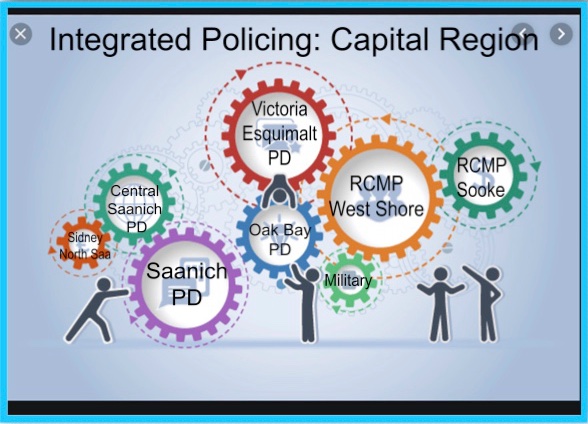
Your police forces work cooperatively to provide the best service possible. Locally, across the nation, and around the world integration is the best model to follow in terms of bringing together the disparate parts of policing in common purpose.
Part I. Police solidarity and the push for amalgamation
Part II, Comparing differing police cultures
Part III, The past as a guide to the future
Link to CBC Podcast: Policing in the CRD
Part IV: Integration vs Amalgamation
1. Introduction
By the time you’ve reached this part, and assuming you read the first three parts, you may understand why amalgamating police forces is likely the biggest mistake that could be made in terms of addressing modern-day policing challenges in the Capital Region. While amalgamation seems intuitively reasonable, those who promote the idea do not take into account the powerful forces at play even in organizations as similar as the police agencies within the Captial Region.
Take the banking system as an example. Would anyone think it reasonable to merge banks into one as serving the best interests of the people in Greater Victoria? In terms of function, the police are no different than a bank, in that they perform an essential public service within an ever-expanding circle from local to national and international.
To function at their best, each constituent part must work at integrating their system into the whole, one that maximizes not only their ability to solve internal challenges but, at the same time, expanding their ability to work together in common purpose. That is were integration outpaces amalgamation.
Even a partial merger, say that of Victoria and Saanich, would be immensely difficult and extremely damaging to both forces. While VicPD may gain an increase in staffing levels, as they did in with Esquimalt merger, the underlying issues facing VicPD could very well be exacerbated. You might simply have a larger force with the same problems. In side-discussions with persons whose opinions I trust, I rather think that has happened in areas where moderate and large scale amalgamations have taken place.
The beautiful thing about integration is that it allows each police agency to maintain an individual identity, while at the same time fully participating and cooperating as a part of the whole.
Across the Capital Region, throughout B.C., and across Canada, integration has become the modern, forward-looking way of bringing disparate police forces, as well as other emergency service providers and community groups, together in common purpose. By doing this, no one group dominates the whole.
The contrary happens with amalgamation. First, you amalgamate, then you must try to divide the whole into equitable parts. That is what the former Victoria Chief Constable (Jamie Graham) proposed with his “Four District” plan as outlined in Part II of this series (Section 6). The likely outcome? Only one culture would survive and that particular culture may not be the best. Perhaps, many discerned that in the VicPD/Esquimalt merger as expressed in this article in the Victoria News on March 13, 2019: Local powers say a regionalized police force needed for Greater Victoria: VicPD, Victoria, Esquimalt, and Grumpy Taxpayer$ argue for police amalgamation
This part of the series will explore the nature of integration in the Captial Region and how that integration is changing the face of policing as it was often practiced through much of the last century. It is a form of police merger the selects best practices and expands them to the entire region on a voluntary basis. For those who choose to withdraw and go it alone, it’s at their peril.
2. The Methods of Integration
(268)
First Nations Policing
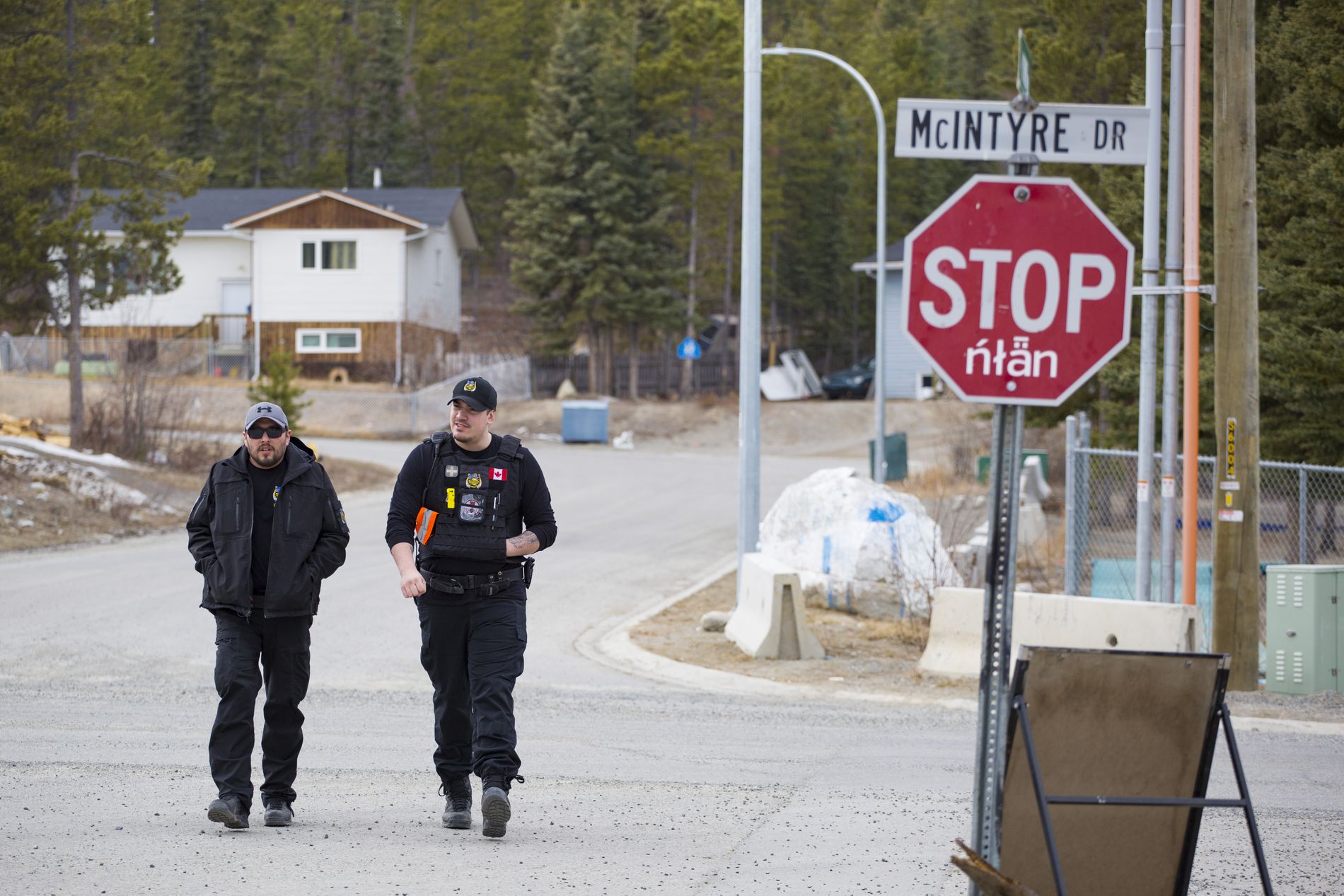 On June 24, 2019, a feature-length article appeared in the Globe and Mail,
On June 24, 2019, a feature-length article appeared in the Globe and Mail,
No Weapons, No Charges: A Yukon First Nation’s solution for keeping the peace.
This excerpt: “In Whitehorse, colonialism and crime have damaged the people of the Kwanlin Dun’s relationships with the RCMP and one another. Now, a pilot project is trying to do policing differently – earning trust and respect in the community, as well as national international attention.”
Back in the 1970s or 80s, while in the early mid-stage of my police career, I became heavily involved in promoting ‘community policing’ efforts both in Oak Bay and around the Province. At one point, I participated in several community policing workshops involving persons with various backgrounds searching for and promoting new ideas for policing. One idea that had surfaced, and seemed to hold considerable promise, became known as the “Indian Constable System”.
Following the seminar, I spent a few weeks researching the subject, then writing and distributing a paper summarizing the program. Because my interests weren’t directly related to policing First Nations lands, I never ended up doing any follow-up work. However, I did occasionally communicate with a few people who were involved, including one or two First Nations individuals who became police officers on their home reserves. Over the years, I simply lost track of how the program progressed until I read the above article in the Globe and Mail yesterday. The Globe article suggested this was a new concept.
In fact, the program in Whitehorse is almost an exact summary of that which was being researched and promoted back in the sixties and seventies. A Google search suggests that early impetus in community policing on First Nations lands and by First Nations members fell by the wayside. Neither did the search reveal any in depth information on the subject other than this summary from a BC Government Web Page:
“The province provides policing services in First Nations communities in rural areas or in First Nations communities in municipalities with populations up to 5,000. Municipalities with populations greater than 5,000 provide policing to First Nations located in their boundaries.
The Stl’atl’imx (Stat-la-mic) Tribal Police Service is the only First Nations administered police force in British Columbia. The Stl’atl’imx Tribal Police Service is a designated policing unit under the Police Act. It is like an independent municipal police department and has a police board comprised of community members.
Stl’atl’imx police are experienced officers or graduates of the Justice Institute of British Columbia. Its officers are appointed under the Police Act.
The First Nations Community Policing Services (FNCPS) program provides many First Nations communities across the province with police services. This enhanced local police service is provided by additional RCMP members who are familiar with First Nations’ cultures and traditions.
See First Nations Policing for more information.
This lack of information on Google suggests a program that held out great promise back in the mid-late part of the last century simply fell by the wayside. I wonder what happened that forty years later, we are now again just looking at this as being a program with great promise. I find it most perplexing and shall try and dig out that old paper and see what was actually being promoted so many years ago.
Harold McNeill
Oak Bay Police
Det/Sgt (retired – 1994)
(150)
The Scratch and Lose Caper
How to scratch open a jail cell.
At 2:00 am Sunday, or at that time any other day of the week, Greater Victoria was known as the land of “Newlyweds, Nearly Deads.” As traffic thinned during those early morning hours, the hum of the tires on a car traveling at high speed could be heard for miles. On this morning, the hum was that of an early 1960’s Oldsmobile, a machine having witnessed better days, as it sped East along Pandora, then onto Oak Bay Avenue.
The four young men inside were still hooting and hollering after partying late in one of the downtown clubs. They were now heading home to Gordon Head but having missed the Fort Street cut-off that would have taken them to Foul Bay Road then north, continued East along Oak Bay Ave. All had been drinking heavily and had no particular purpose in mind other than getting home to continue the party.
As they approached Foul Bay Road someone hollered: “Hey man, ya gotta turn here!” However, speed and distance would soon become limiting factors given the tank in which they were riding. The driver, his sense dulled by alcohol, braked heavily then cranked the wheel hard left. As momentum and weight took over, the tires broke away in a wide yaw that led first to the sidewalk, then to West wall of Frost’s corner store.
Photo (web) A 1960’s style Oldsmobile, 4-door.
(299)
Intervention, the key to fighting crime
This post is created from an interview with RCMP Assistant Commissioner James Malizia (file photo above) as published in the National Post (front page) June 7, 2017. (Link here).
The following National Post article is only modified by replacing the word terror with the word crime.
Making this simple change leads to an entirely different perspective in the article. To my mind, it suggests everything the Assistant Commissioner had to say about terror serves only the interests of the RCMP and other security agencies and not the interests of the general public. It’s a means to build the budget to build the agency.
As background, in 2015 (the most recent year readily accessible when this article was written) there were over 380,00o violent criminal acts in which 605 people were murdered, with attempts being made to murder a further 774. Over 200,000 reported aggravated sexual assaults (this does not include other aggravated assaults), with 22,000 reports of robbery and 3,500 reports of abduction.
When these real-life criminal cases, which present a clear and present danger to Canadians, is cast against the almost negligible possibility of a terrorist act, it makes it seem as if the Assistant Commissioner has no concept of how trivial his suggestions are. Why not early intervention (with youth) when it involves the potential of becoming a criminal?
Statistical Source: Canadian Criminal Crime Statistics 2015
Asst/Commissioner Malizia on Early Intervention being the key:
(1244)

